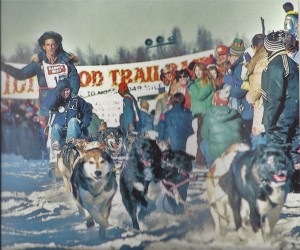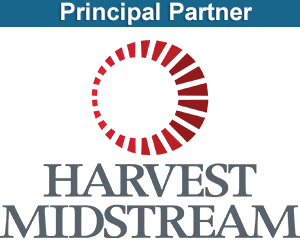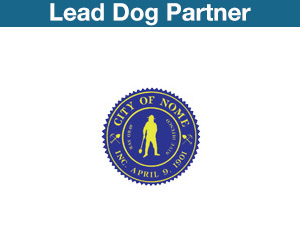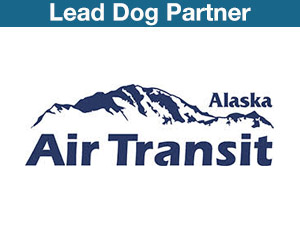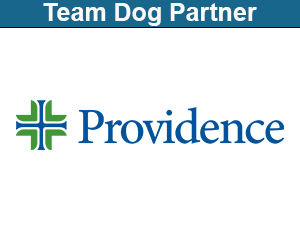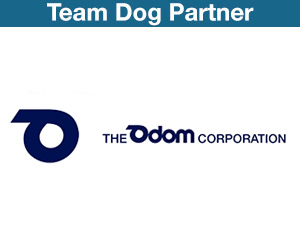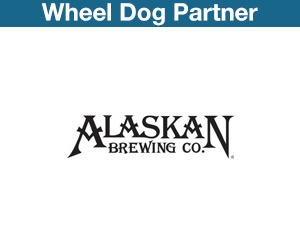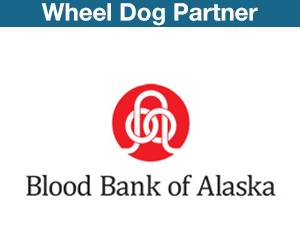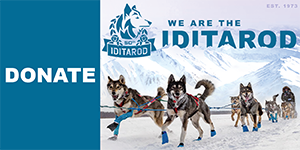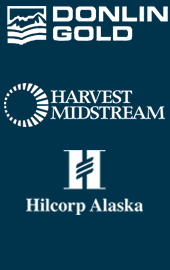By Joanne Potts, Assistant Race Director & Natalie Baumgartner
Ernie Baumgartner moved to Alaska with his family when he was a child. He has lived all over Alaska including Klawock in Southeast Alaska, Homer, Fairbanks/North Pole, Bethel, his parent’s homestead near Delta Junction, and McGrath where he first moved in 1971 with his wife Natalie and their children. He and his family were living in McGrath where he worked for Alascom when the first Iditarod race took place. Ernie wasn’t a dog musher at the time, but his family provided hospitality during the race to Emmitt Peters, Joe May and other mushers during those very first years. Back then in the ‘70’s and into the ‘80s, mushers and their teams would stay with families if taking their 24 hr rest stop or just stopping in a checkpoint village only long enough to have a good hot meal, maybe fix a sled, call their family and even take a catnap. Those were the days when hospitality was offered to each team at every checkpoint village along the trail. It was an annual event in which the whole village would take an active role. That closeness and that form of involvement in the race is greatly missed by people in many villages. The race is run quite differently now, with all teams and drivers staying in one location and without that personal, intimate involvement of nearly each household.
Ernie said, “In 1975 or 1976, a musher gave me one dog. Then I got another and another and then buying a small local team until I had a dog team.” He entered his first Iditarod in 1978 finishing 24th. He ran again in 1979, finishing 15th and finished in 1980 and 1982 in third and sixth position. He scratched in 1981 and 1985.
Ernie explained that his seven children were a big help during his mushing years. “I had a whole bunch of kids to help take care of the dog team.” They would be in the dog yard, ready to harness up that evening’s selected team right after he got off work and often a 2nd team would be taken out by one of his teenage children on a shorter route. Those successively longer runs and rotation of dogs during training were the routine during the months before the start of the Iditarod for 6 years. The well-planned schedule and dog rotation, along with notes are recorded in a training schedule notebook that he has to this day. Natalie and the kids would then have dog food ready and the kids would help feed all of the dogs when they got back. The children enjoyed mushing, and four of them, ranging in age from 5 to 16 years of age, ran in Rondy races. His son, Gary, won the Jr. Iditarod in 1980 and also received the award for being the top placing rookie that year. Gary ran the Jr. Iditarod again in 1981 and 1982 finishing second in both races.
After the 1985 race, Ernie retired from Alascom, and seeing that the family’s current plan of building houses during the summer and racing dogs during the winter was no longer a viable plan after the HUD houses were built in McGrath, Ernie thought, “This is great, but I gotta do more.” So he and his family moved to Fairbanks in 1986 and Anchorage in 1994 where he worked for GCI for the next eleven years. Before moving to Fairbanks, he gave his dog team to a young girl in Nikolai who wanted to run the Iditarod at some time. But he kept a few of his dogs and took them to Fairbanks with the family. His youngest sons bought a few pups to add to the team and ran them on the dog trails around Fairbanks. While all seven kids enjoyed mushing in their younger years, they all knew first-hand how much work and expense having a professional dog team was and decided that they didn’t need that as adults. So they went off in different directions.
Ernie explained, “The Iditarod was a novelty when it first started. We were like a family. It was fun and enjoyable during my years of running. I have a lot of respect for other mushers. Everybody is different, using different dog food, different dog care, different strategies etc., but they all have one thing in common—they all struggle. The race just does that to you.”
When Ernie started mushing, he says he had good mentors, but he still had a totally different idea about what the race was about. He said that once he was sleeping along the trail in his sleeping bag when another musher went by and hollered for him to get out of that sleeping bag, saying, “This is a race.” Ernie went on to say, “you never knew what was ahead of you. In his first race he remembers going over a rise just past Egypt Mountain and looking down into the valley below where he saw all the other mushers ahead of him camped. Babe and Eep Anderson of McGrath were among those camped and he asked them why they were all camping together here.” Eep said, “There’s no trail. We’re just waiting.”
It was a particularly severe storm out on the coast, many of the lead dogs of front-runner teams just wouldn’t venture into the wind and low visibility where there was no discernable trail. But, Ernie’s lead dog Brandy seemed to know where that trail was, although it was not visible to others. He led not only his own team across that stretch, but several other teams as well. Following that 1982 race, the mushers voted to honor Ernie’s lead dog Brandy with the Golden Harness, a treasured award for the “most outstanding lead dog” and first sewn by Lolly Medley during those early years. It now is displayed in the Gift Shop of Hotel McGrath, along with his 1980 Third Place trophy.
Ernie said, “Iditarod was always a learning experience and a good experience. I wouldn’t have missed it for the world.” He shared that the race is very different these days with the use of high-tech equipment and different rules, and is thankful that he had the opportunity to run the race when it was in its infancy along with its own unique challenges. Mushers had the opportunity to experience hospitality in homes of families in each village along the trail and gain life-long friends along the way. Those days and experiences were priceless.
After an absence of 10 years, Ernie, Natalie, and two of their teenage sons moved back to McGrath in 1996, where he went to work for the local electric utility. He is now the general manager of the Middle Kuskokwim Electric Co-op which supplies power for five middle Kuskokwim River villages downriver from McGrath. He travels a lot “running between one bureaucrat and another” and is currently working on carrying out a federal grant for the Co-op that has provided a replacement generation system in four of the five villages.
These days, his own family, along with Ernie’s siblings and mother are spread across Alaska and outside. His wife, Natalie, recently retired from serving as the city administrator for 12 years; Tammy, their oldest daughter, passed away in 2009 from cancer. She is seen in the basket at the re-start of a race in a photo featured in the front flap as well as within the pages of the book, “IDITAROD – The First Ten Years”; Shelly is a teacher with a master’s degree working and living with her family north of Seattle, WA; Gary has retired from 26 years as a BLM wildfire Smoke Jumper and is now the BLM State Aviation manager located in Fairbanks where he lives with his wife and the youngest of his four children; Shana is also a teacher with a master’s degree and lives with her family in Wasilla, working for the school district serving that area; Jennifer and her family live in McGrath where, among other business ventures, she is the co-manager of Hotel McGrath, along with her husband; Rhone, (as it was most often spelled in 1978) named after the checkpoint located as the trail drops down out of the Alaska Range. He lives in McGrath and works on call for the electric power plant co-op, as well as logging & milling, trapping and spending time flying his plane in the region and enjoys working on the family’s 80 acres close to the Rohn checkpoint near the Alaska Range. Thomas Ryan, better known as TR, works half the year in McGrath and is in charge of the State DNR Forestry’s wildfire facility maintenance including the tanker base. The busy family has grown to be quite a large team, including 29 grandchildren and nearly as many great grandchildren.




